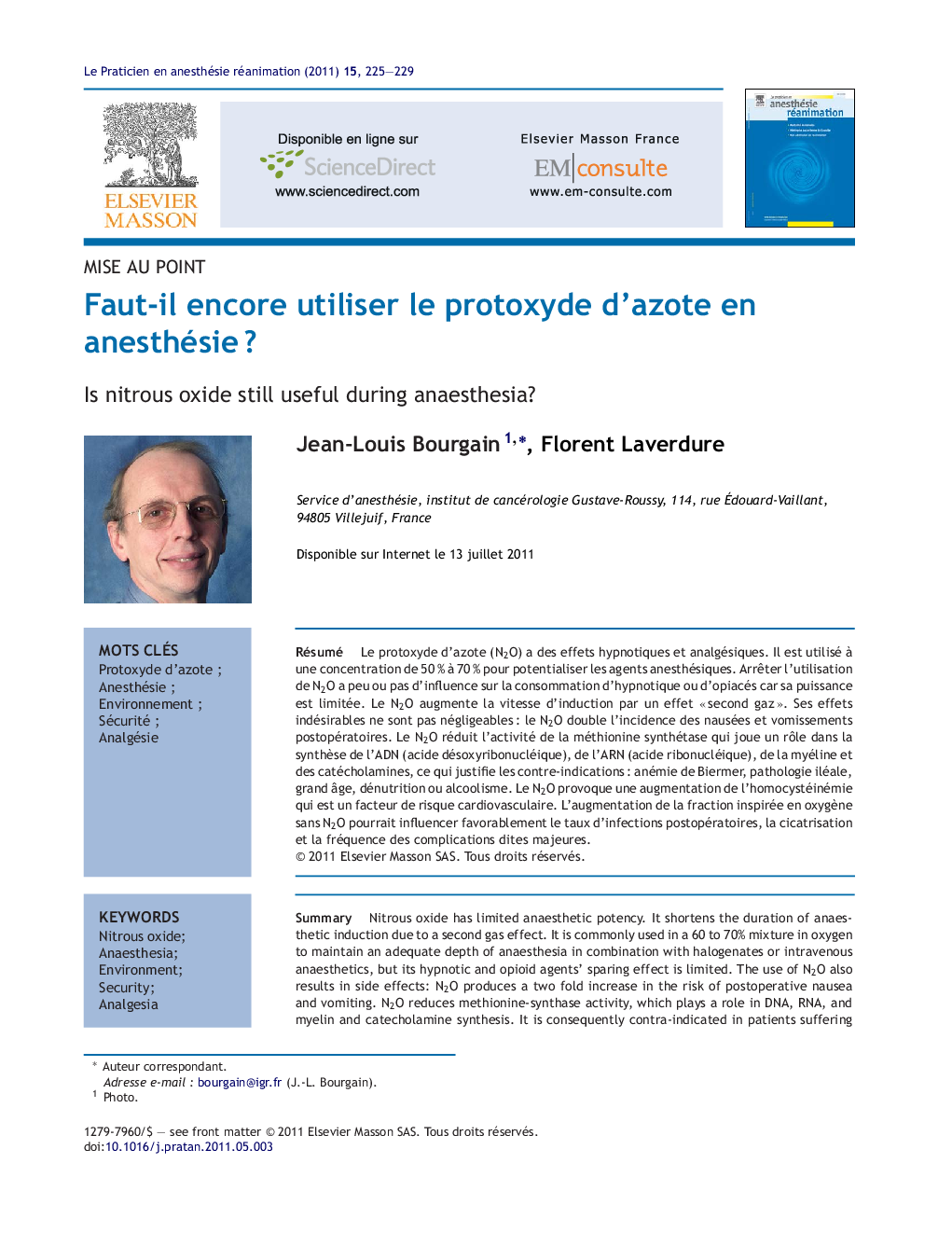| کد مقاله | کد نشریه | سال انتشار | مقاله انگلیسی | نسخه تمام متن |
|---|---|---|---|---|
| 2612225 | 1134750 | 2011 | 5 صفحه PDF | دانلود رایگان |
عنوان انگلیسی مقاله ISI
Faut-il encore utiliser le protoxyde d'azote en anesthésie ?
دانلود مقاله + سفارش ترجمه
دانلود مقاله ISI انگلیسی
رایگان برای ایرانیان
کلمات کلیدی
موضوعات مرتبط
علوم پزشکی و سلامت
پزشکی و دندانپزشکی
بیهوشی و پزشکی درد
پیش نمایش صفحه اول مقاله

چکیده انگلیسی
Nitrous oxide has limited anaesthetic potency. It shortens the duration of anaesthetic induction due to a second gas effect. It is commonly used in a 60 to 70% mixture in oxygen to maintain an adequate depth of anaesthesia in combination with halogenates or intravenous anaesthetics, but its hypnotic and opioid agents' sparing effect is limited. The use of N2O also results in side effects: N2O produces a two fold increase in the risk of postoperative nausea and vomiting. N2O reduces methionine-synthase activity, which plays a role in DNA, RNA, and myelin and catecholamine synthesis. It is consequently contra-indicated in patients suffering from Biermer anaemia, bowel diseases, alcoholism, and in aged and malnourished patients. N2O induces an increase in homocystein, which is a risk factor of cardiovascular disease. Administration of high FiO2 concentration without N2O has been reported to decrease the incidence of postoperative infectious and major complications and to improve surgical wound healing.
ناشر
Database: Elsevier - ScienceDirect (ساینس دایرکت)
Journal: Le Praticien en Anesthésie Réanimation - Volume 15, Issue 4, September 2011, Pages 225-229
Journal: Le Praticien en Anesthésie Réanimation - Volume 15, Issue 4, September 2011, Pages 225-229
نویسندگان
Jean-Louis Bourgain, Florent Laverdure,